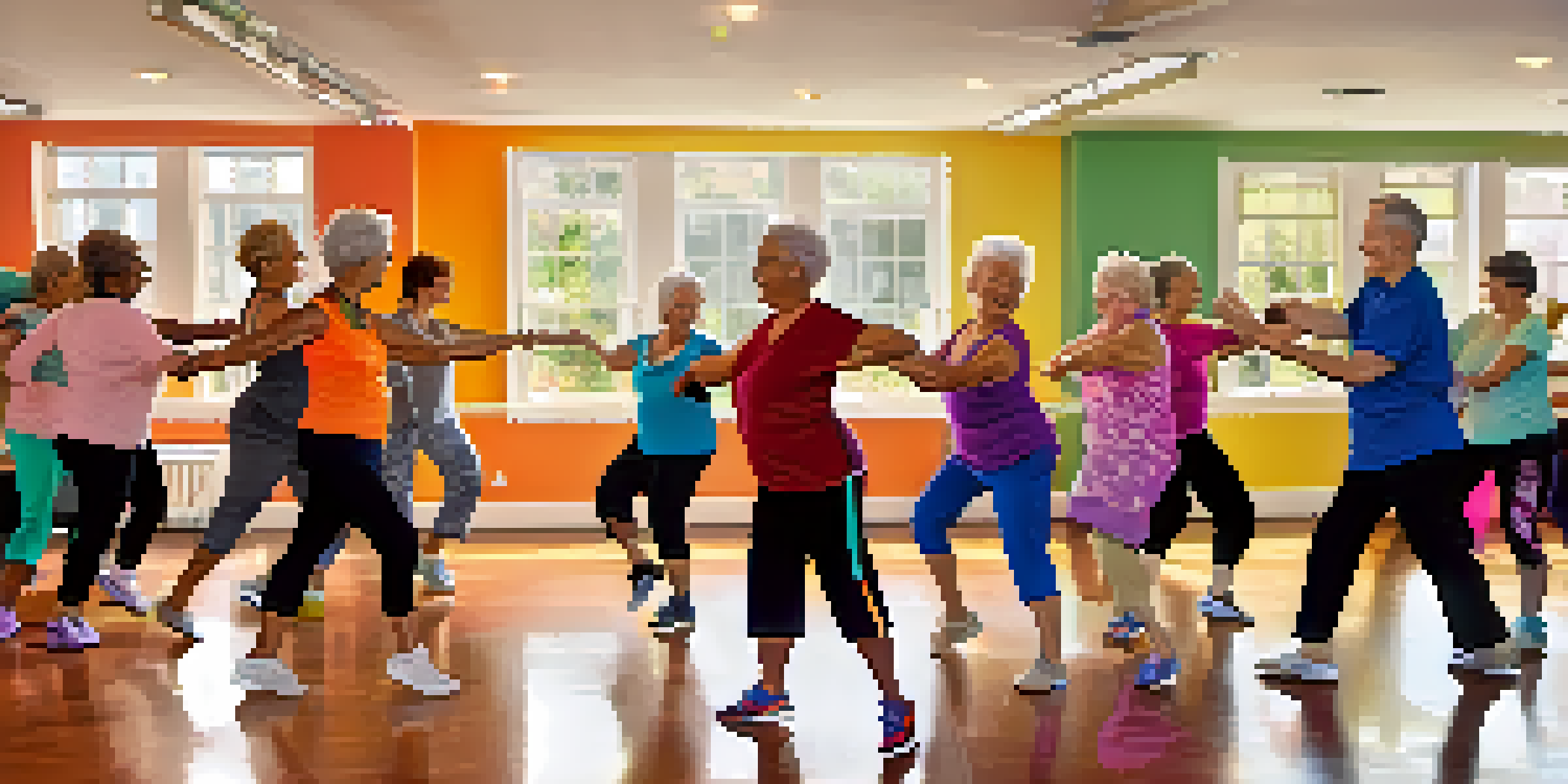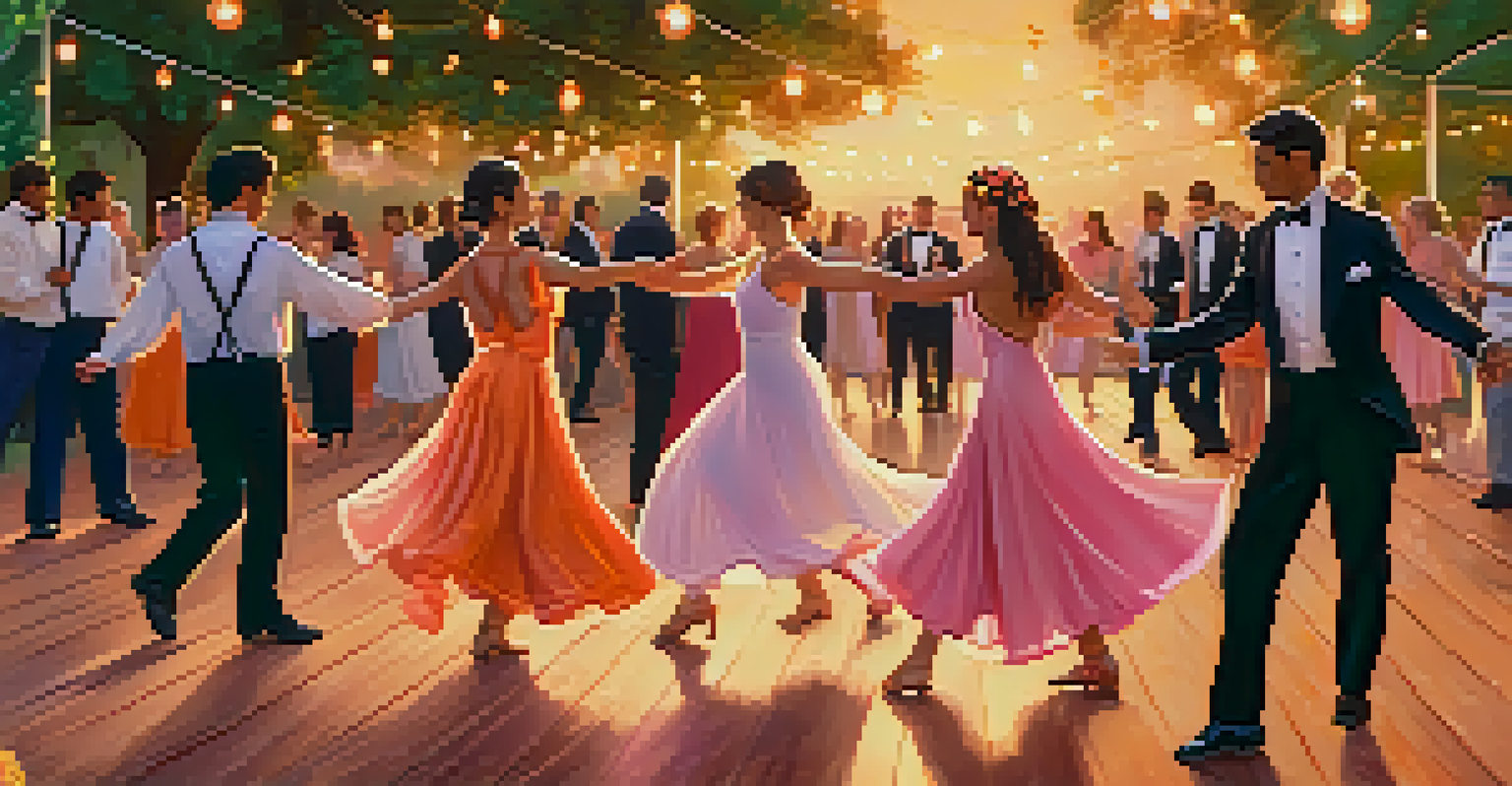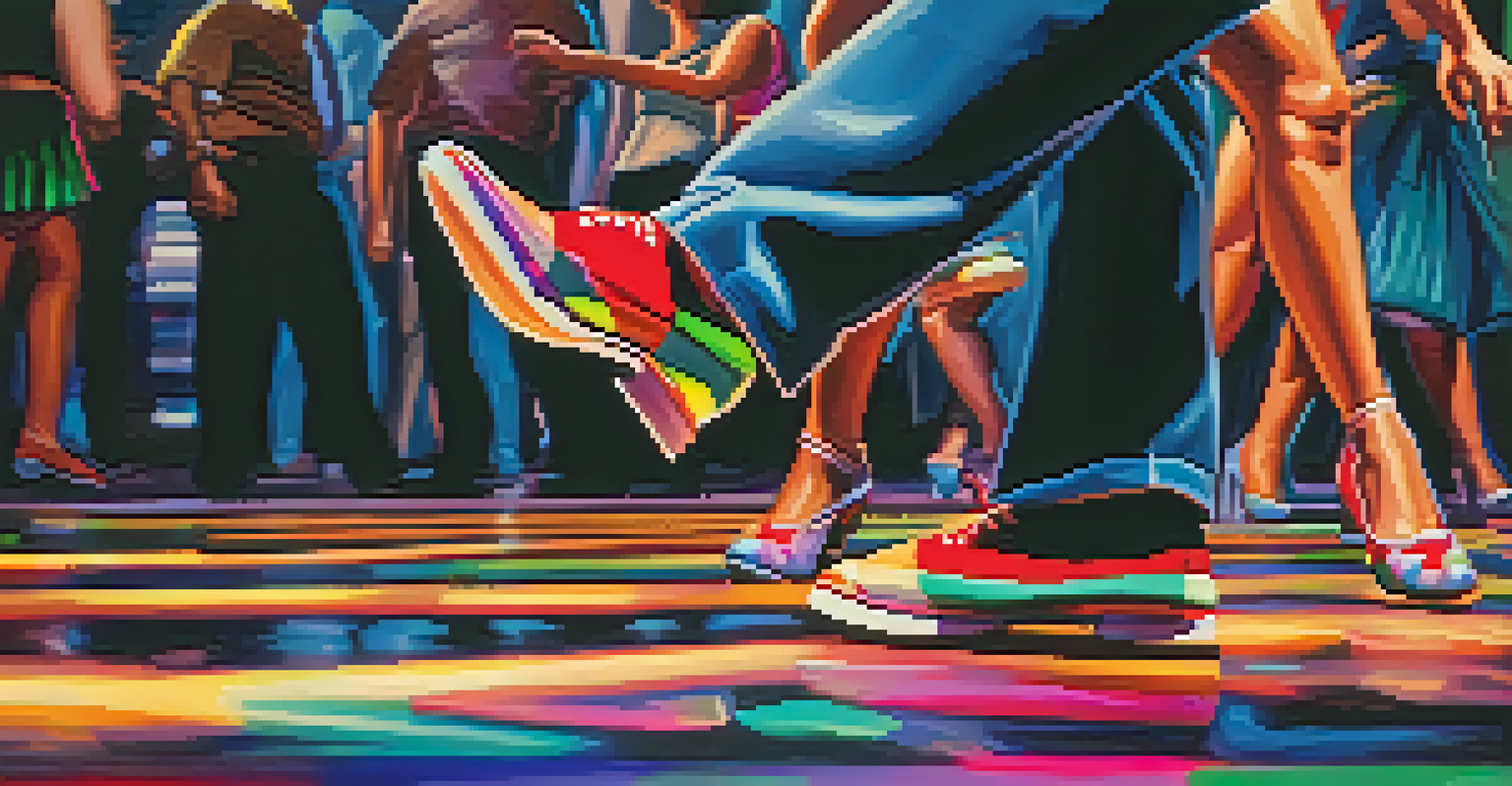Physical Activity and Memory: The Dance Connection in Aging

Understanding Memory Changes with Aging
As we age, our memory can start to change, often causing concern for many individuals. Both short-term and long-term memory may decline, leading to challenges in everyday tasks. However, it's important to recognize that these changes are a natural part of the aging process, and not all older adults experience significant memory loss.
Dance is the hidden language of the soul.
Interestingly, this decline can be influenced by various factors, including physical health, mental engagement, and lifestyle choices. Staying active, both physically and mentally, can play a crucial role in maintaining cognitive function. This is where the connection between physical activity, like dance, and memory becomes particularly fascinating.
Research shows that engaging in regular physical activities can help slow down memory loss and cognitive decline. Dance, in particular, stands out due to its combination of physical movement, social interaction, and mental challenge, making it a powerful ally in aging gracefully.
The Science Behind Physical Activity and Memory
Physical activity has been shown to boost brain health in numerous ways. When we exercise, our body releases endorphins and other chemicals that promote a positive mood and enhance cognitive function. These benefits extend to our memory, as improved blood flow to the brain helps nourish and support its many functions.

Studies have found that aerobic exercises, such as dancing, can increase the size of the hippocampus, the brain region associated with memory and learning. This means that regular engagement in activities that get the heart pumping can literally lead to a better memory. It's as if each dance step is a step towards sharper cognitive abilities.
Dance Boosts Memory and Cognition
Engaging in dance not only enhances physical fitness but also significantly improves cognitive health and memory retention.
Moreover, the rhythm and coordination required in dance stimulate neural connections, enhancing brain plasticity. This adaptability is essential for learning new information and skills, which is particularly beneficial for older adults looking to maintain their cognitive health.
Dance as a Multi-Dimensional Exercise
Dance is not just about moving to music; it's a multi-faceted workout that engages the mind and body simultaneously. When you dance, you're not only improving your physical fitness but also boosting your cognitive functions. From remembering choreography to coordinating movements with music, dancing challenges the brain in ways that other exercises may not.
Movement is a medicine for creating change in a person's physical, emotional, and mental states.
Additionally, dance often involves social interaction, whether it's in a class or a community event. This social aspect can help combat feelings of isolation and depression, which are common in aging populations and can further impact memory. Engaging with others during dance fosters a sense of community that enhances emotional well-being.
So, when we talk about physical activity, dance becomes a unique option that combines fitness, fun, and friendship. This makes it a powerful tool for those looking to improve their memory and overall cognitive health as they age.
The Role of Rhythm in Memory Retention
Rhythm plays a pivotal role in both dance and memory retention. Studies have shown that rhythmic patterns can enhance our ability to remember information, making dance a potent ally for cognitive health. When we move to a beat, our brains are actively engaged, creating connections that help solidify memories.
For example, think about how we often remember song lyrics or dance steps better than facts from a textbook. This is because rhythm and melody can create a mental framework that makes information easier to recall. Thus, incorporating rhythmic movement into our routines can provide a dual benefit: keeping us physically active while also boosting our memory skills.
Rhythm Aids Memory Retention
The rhythmic patterns found in dance help create mental frameworks that make it easier to remember information.
Incorporating rhythmic exercises, such as clapping or tapping along to music, can also be beneficial for those who may not consider themselves dancers. These activities can stimulate brain regions associated with memory and learning, proving that you don’t need to be a professional dancer to reap the rewards.
Social Dance: A Memory-Boosting Activity
Social dance forms, like ballroom or salsa, offer unique advantages for enhancing memory among older adults. These dances require partners to communicate and cooperate, engaging both the mind and body. The need to remember steps and patterns, while also interacting with a partner, provides a full-brain workout.
Moreover, social dancing creates opportunities for meaningful connections, which are essential for mental health. Building relationships through shared activities can lead to increased happiness and reduced stress, both of which have positive effects on memory retention. The joy of dancing with others can literally brighten one's day and sharpen the mind!
Participating in social dance classes can also create a sense of routine and commitment, which can help foster a healthy lifestyle. As individuals look forward to their dance nights, they're more likely to stay active and engaged, promoting better memory function as they age.
Creating a Dance Routine for Cognitive Health
To harness the memory-boosting benefits of dance, it’s essential to establish a routine that incorporates regular movement. Start by finding a dance style that resonates with you, whether it's Zumba, line dancing, or even just freestyle at home. The key is to choose something enjoyable; if you love it, you're more likely to stick with it.
Consider joining a dance class or a local community group, which can provide both structure and social interactions. These environments often offer a supportive atmosphere that encourages participants to learn and grow together, while also keeping them motivated. Plus, the excitement of learning new moves can stimulate the brain and help improve memory.
Social Dance Enhances Well-Being
Participating in social dance fosters meaningful connections, which can lead to increased happiness and better memory function.
Setting realistic goals, such as attending a class twice a week, can help make dance a regular part of your life. Over time, you'll likely notice improvements not just in your physical health, but in your mood and memory as well.
Conclusion: Dance Your Way to Better Memory
In conclusion, the connection between physical activity, particularly dance, and memory enhancement in aging is both compelling and encouraging. Engaging in dance promotes not only physical fitness but also cognitive health, offering a holistic approach to well-being. As we’ve seen, the rhythm, social interaction, and mental challenges that dance provides can significantly contribute to better memory retention.
So, whether you're a seasoned dancer or just starting, consider incorporating more dance into your life. Remember, it’s not just about the steps, but about the joy of movement and connection with others. As you groove to the music, you’re also nurturing your brain’s health.

Ultimately, embracing dance as a regular part of your routine could be one of the most enjoyable ways to enhance your memory and overall cognitive function as you age. So lace up those dancing shoes and let the music guide you to a brighter, sharper future!